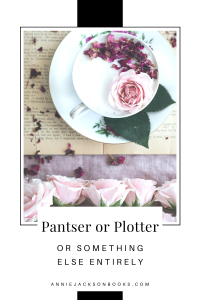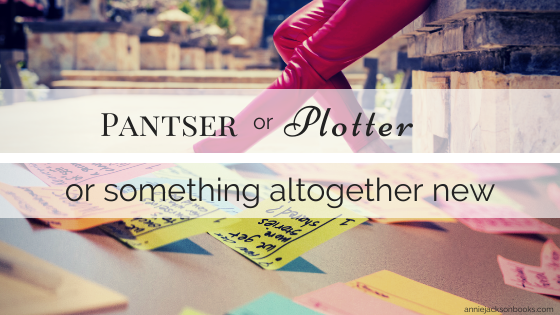The most popular question for authors these days seems to be “Are you a pantser or a plotter?”
If you know me at all you can probably guess I think these are dumb words and would answer neither out of spite. But the actual truth is I write in layers.
There’s an old saying, “Write what you know” and the conventional interpretation is to write about things you know about. But another, very effective interpretation is to write what you know about the story.
Writing in layers just means that I write what I know of the story right now and by the time I get to the end I’ll know more so I go back and do it again. And again and again. It means I write a lot of drafts but it’s also really liberating because I only have to write what I know each time and then move on.
The first layer for me is the narrative draft. This is where I figure out the core of the story, the very basics of what happens from the beginning to the end. There’s a lot of side writing here of characters and back stories because in order to figure out what happens I first have to know why it happens and how (as in magic or politics or rules of the world) has to figure in there also. But the actual writing is very sparse. There’s patches of dialog because a lot of times that’s how I figure out how to move through a scene or from one scene to another or how I sort out some of the whys. But if I know they have to get to London it’ll look something like this.
They take the train to London.
Exciting, right? My narrative drafts are usually around 10,000 to 12,000 words but I have the whole story from beginning to end worked out and I know my characters very well. I think of it like the skeleton of the story.
My first draft is the hardest because I have to take the sparse bits that are easy to write and turn them into actual scenes. There’s usually a lot more dialog at this stage and descriptive narrative in between or when I’m still feeling lazy. A lot of the scene description happens in this draft so I start to articulate what the world looks like and feels like for the reader.
And, as I said before, there’s a lot of dialog but just raw dialog without indicators or tags. Because I know who’s talking and for this draft, that’s enough.
They boarded the train and she was still shaking as he led her down the narrow corridor into a [cabin].
“What was that?! Who were those guys and what do they want with me and how did you know I needed help?” It didn’t matter that she barely knew this man – that what she thought she knew of him was obliterated with that first gunshot; he was suddenly her lifeline and she was terrified of that and of him but not as terrified as she was of the men who wanted her dead.
“It’s going to be ok. You’re safe for now.”
I think of my first draft as putting flesh and skin onto the bones of the story. It doesn’t have to be pretty it just has to have substance. It usually ends up somewhere around 20-30,000 words.
Then there are drafts and drafts and drafts. The second draft typically is where I explore the emotion of the characters and add indicators and action to the dialog. My editors weigh in pretty much after the first draft and almost invariably they quickly start asking for rewrites that engage with the characters more closely and more dialog. It’s frustrating but it’s also really good because every time I have to write a scene with more depth I learn more about the story world and the emotional state of the characters at that moment which improves the entire layer.
The actual writing also starts to be refined which isn’t all grammar – it’s a lot of pulling sentences apart or reapproaching a whole moment.
There’s drafts that add more romance or more conflict or rewriting an entire mythology which can involve anything from restitching lines or paragraphs throughout the story to pulling it apart at the seams and stitching it back together by moving scenes around entirely. This is also where first and second draft bits start to show up in an otherwise well formed story and have to be worked over to match the surrounding narrative.
And each of the drafts adds to the word count as I add more depth, more emotion, more scenes, more nuance layer upon layer. Because with every pass I understand the world and the characters better and as I continue to write what I know about the story each time that knowledge grows and so does the story.
But most of that can’t be included as examples without making this the longest post ever (which it very nearly already is). This, however, is probably a third draft version of my example.
They boarded the train and she was still shaking as he led her down the narrow corridor into a cabin.
“What was that?!” she asked as he slid the door closed and turned to her. “Who were those guys and what do they want with me and how did you know I needed help?”
He didn’t answer any of her questions. He took a small step closer to her, holding her arms gently as he looked at her.
It was the steadiness in his eyes that finally calmed her racing heart. It didn’t matter that she barely knew this man – that what she thought she knew of him was obliterated with that first gunshot. Somehow in the past twenty minutes he became her lifeline. And she was terrified of that and of him but not as terrified as she was of the men who wanted her dead.
“It’s going to be ok,” he assured her. “You’re safe for now.”
I can tell you my editors, depending on the context, would want more romance. And better description of his actions (holding her arms is weird) and more! if they especially like the world or the characters. More to happen in this scene and more to feel and if they were writing this post with me you might get a 4th or 5th draft version.
But that’s what writing in layers looks like for me. I don’t really plan what I’m going to write then go write it. And I don’t write the whole 50,000 words by the seat of my pants. I write what I know. Then I go back and write more because I know more. Layer upon layer until I build a story ready to be shared with everyone else.

